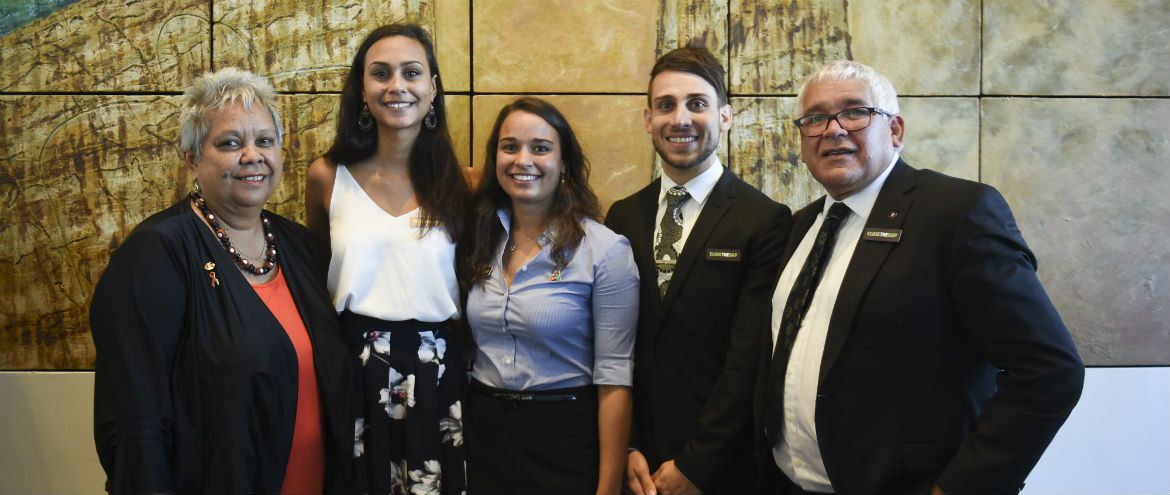
Danielle Dries, 28, is one of many exceptional young Aboriginal people making their mark today. A Kaurna woman (whose traditional country includes Adelaide), she will soon graduate as a doctor.
Close the Gap Campaign Lead, Tom Widdup, finds out how — despite continued high levels of Indigenous disadvantage, and a disconnect that still hinders relations between Indigenous and non-Indigenous Australia — Danielle and many young Indigenous Australians like her are working to overcome these barriers.
What is it like being a young Aboriginal woman in Australia at the moment?
This is a very difficult question to answer.
I believe young Aboriginal women have a certain level of privilege that our parents and our elders never had. On the whole we have more opportunities, but many Aboriginal girls and women continue to suffer significant disadvantage in comparison to non-Indigenous Australians.
I’m not saying I’ve had it easy. I have experienced a lot of racism and discrimination as a young Aboriginal woman. It’s rarely blatant racism, but I am regularly made to feel less than those around me; people question why I would want to identify as Aboriginal. There’s still definitely a lack of understanding in Australia about Aboriginal history, culture and the vast diversity among our people.
Trying to balance my Aboriginal culture within a westernised Australian community is also very difficult. One thing I do know is that I’m proud of the many people that have fought for the rights that have given us more opportunities.
Why did you choose to study medicine?
I started off as a physiotherapist but am now a final year medical student at ANU. An elective subject in Aboriginal and Torres Strait Islander health, together with my Aboriginal ancestry, made me want to do more for our people.
As a physio, I couldn’t find many jobs in Aboriginal Medical Services or in remote communities, so I decided to study medicine. This opens up more opportunities to work in Aboriginal health, but also to advocate for allied health positions.
Access to services is a complex issue; and it doesn’t necessarily improve for Aboriginal people living in the city. My Nan, who is now 80 years old, has had diabetes since she was 29. Three of my uncles have diabetes as well, and two had a stroke in their 50s. All live in the city, not rural or remote locations. Levels of chronic disease are high among our people everywhere. But while living in the city has helped my grandmother live longer (with good access to multidisciplinary care) services in cities are not always accessible to Indigenous people for other reasons, such as cultural appropriateness.
One of the key ways to improving Indigenous health will be to improve access to quality, culturally responsive, multidisciplinary care. To do this Aboriginal and Torres Strait Islander health needs to have a significant presence in the core curriculum of all health degrees across Australia.
What are Indigenous communities saying about Indigenous health?
I hear communities saying: “too many of our people are sick” and “too many of us are dying too young”. For years there have been policies and ‘interventions’ that have been trialled and failed. There is a belief that health programs will fail before they begin, or when they do work, that funding will be cut.
This is a huge stress for our people. Communities want mainstream Australia to listen to them and understand the health problems they face; they want to have empowerment over their health and their health care.
Closing the gap will take time: health outcomes won’t improve overnight.
How do you get people to listen?
I used to get frustrated when people blamed Aboriginal and Torres Strait Islander people for their poor health: saying things like “they’re lazy”, or “they don’t want to work”, or our problems are just alcohol and other ‘lifestyle’ diseases. As if the levels of disadvantage we face today (and the subsequent health problems we face) is a lifestyle choice.
But with guidance from both Indigenous and non-Indigenous mentors, I’ve realised that it’s not helpful to get angry or frustrated at comments like these. It just makes people shut down. I’ve learnt to be more open and understand why people have these negative stereotypes and to start a conversation about Aboriginal culture, history and the strengths of our people. Education is key.
How did you find the Closing the Gap Parliamentary Breakfast you attended earlier this month?
It was difficult to hear the Prime Minister report the poor progress in closing the health gap. We do need to remember though that it has only been 10 years since the campaign was launched and less since the Australian Government committed to take stronger action. It also highlighted for me that we need strong bipartisanship when it comes to achieving Indigenous health equality.
Another highlight of the breakfast was hearing Aboriginal and Torres Strait Islander leaders Professor Tom Calma and Dr Jackie Huggins speak. They were both really inspiring and provide strong, positive role models for our youth. (I’m also really excited that Dr Huggins is going to speak at our Australian National University National Close the Gap Day event.)
What is your take on the Aboriginal and Torres Strait Islander community’s reaction to the Closing the Gap comments that came from the various party leaders?
This is something that hits the media around this time every year; there are lots of promises made, and then after a couple months it fades away. On the other hand, there is still a lot of hope. Of course people would like to see significant changes, but we’re addressing hundreds of years of disempowerment and human rights abuses. As I said earlier, this is not an issue we’re going to solve overnight.
What can you do to promote Indigenous health equality?
1. Leave a comment below
2. Share Danielle’s story
3. Sign the Close the Gap pledge
4. Register your own National Close the Gap Day event